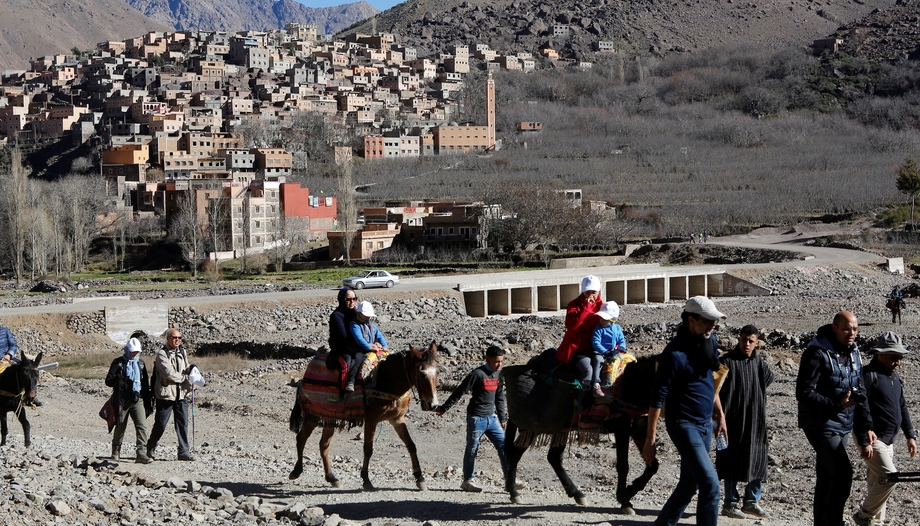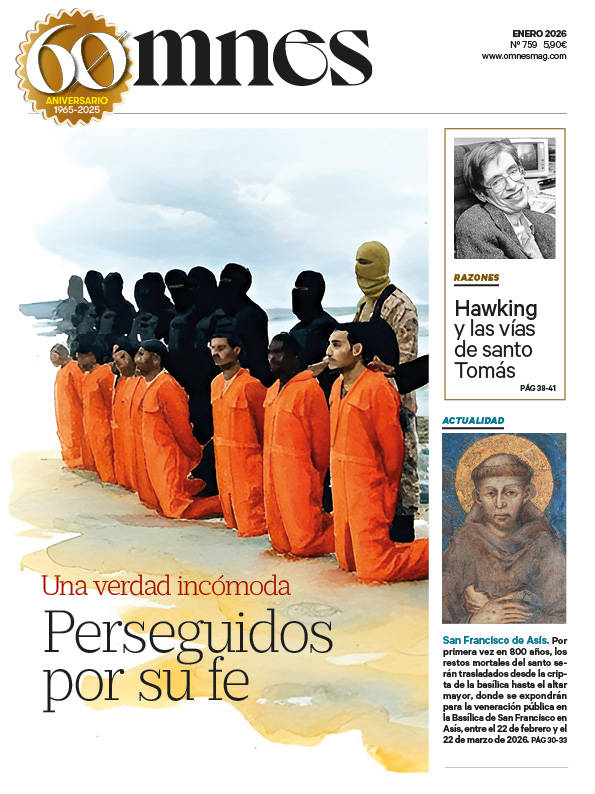From the tip of Tarifa, from Gibraltar and southern Spain, Africa is just a stone's throw away. For the traveler traveling the National Route 340 in Andalusia, it's easy to get distracted contemplating the panorama and trying to glimpse, beyond the sea, the green mountains of the Black Continent (which isn't black there). Another world, another culture, another mentality just a few kilometers away, beyond the point where the placid and warm waters of the Mediterranean meet and collide with the sea currents and the narrow and rocky beaches gradually become, from Tarifa to Cadiz, wider and sandier, from Tarifa to Cadiz.
It is Morocco, in Arabic Maghreb (literally: west, because it is the westernmost point of the Arab world), which is contemplated beyond the blue Strait of Gibraltar, with its white houses leaning against each other in the medinas, the mysterious imperial cities, the Sahara desert, the conflicts and the people who inhabit it, the migrants trying to escape to Europe.
Some data from Morocco
Morocco has been a constitutional monarchy since 1990 (previously it was an absolute monarchy with strong Islamic religious connotations). It has an area of 710,850 km² and about 37 million inhabitants.
It is characterized by a variable landscape, as it is bathed by both the Atlantic Ocean and the Mediterranean, crossed along its entire length by the Atlas Mountains (with peaks of more than 4,000 meters) and affected by the Sahara Desert over a large part of its surface.
Its name, in European languages ("Morocco" in Spanish, "Maroque" in French, "Morocco" in English, "Marocco" in Italian), is not derived from the official Arabic toponym (Maghreb), but from that of one of its most famous cities, Marrakech (Arabic: مراكش, Marrākush), which in turn derives from the Berber Mur-Akush (meaning "land of God").
The Head of State is King Mohammed VI.
Maghreb and Mashreq
In the articles dedicated to Syria, Lebanon, Egypt, Iraq, Israel y PalestineWe have mentioned the great differentiation made in the Arab world between Maghreb (Arabic for "west", referring to the part of North Africa that includes Mauritania, Morocco and Western Sahara, Algeria, Tunisia, Libya) and Mashreq (Arabic for "east", referring to Egypt - Sudan, as well as the countries of the Gulf and the Arabian Peninsula, deserve a separate discussion - Israel/Palestine, Lebanon, Syria, Jordan, Iraq).
In general, this difference can be attributed to a number of aspects:
The Maghreb is characterized by a strong Berber presence (it can be said that a large part of the population is of Berber origin, although today the majority is Arabic-speaking), while the Mashreq, although it was "Arabized" and Islamized at the same time as the Maghreb, has an already Semitic substratum (i.e. of populations that spoke Semitic languages, of the same family as Arabic, such as Hebrew, Aramaic in its various forms, etc.).
-The Maghreb is much less religiously composed than the Mashreq. Traditionally rich in numerous Jewish communities and despite being the cradle of Christian saints such as Augustine, especially from the 11th and 12th centuries onwards, North Africa, with the exception of Egypt, has seen its Christian communities practically disappear, while Jews have remained numerous there. In the Mashreq, however, are the largest Christian communities in the Arab-Islamic world (Egypt, Iraq, Lebanon, Syria).
-Since the 19th century, France, as a colonial power, has prevailed in the Maghreb, while in the Mashreq (with the exception of Syria and Lebanon) Britain has prevailed. The most widespread European language in North Africa is therefore French (apart from Western Sahara, a former Spanish colony, and Libya, a former Italian colony), while in the Mashreq it is English.
-At the level of Islamic legal schools, in the Maghreb the Malikite school prevails, in the Mashreq, depending on the country, one of the other three (in Sunni Islam there are four legal schools, or madhab, which influence religious, legal and political thought, with differences which, from one school to another, may not be negligible: the Malikite, the Shafi'ita, the Hanbalite and the Hanafite).
Arabs and Berbers
About 65% of Moroccans are native Arabic speakers, but of Berber origin. The rest of the population speaks Berber (in different dialects) as their mother tongue.
It can be said that the great majority of the population, if not Berber-speaking, is nevertheless akin to the Berber ethno-linguistic group. If, in fact, the Arabic-speaking element is due to the immigration of tribes from Arabia during the Middle Ages and to the Arabization (which went hand in hand with the Islamization) of a part of the natives, the predominant ethnic group, especially in the Atlas area, is Berber.
Berber is, like Arabic, a language belonging to the large group of Afro-Asiatic or Camito-Semitic languages, which is divided into Camitic (Berber languages, ancient Egyptian and others) and Semitic (Arabic, Hebrew, Akkadian, Amharic, etc.). It therefore shares some morphological features with Arabic, but is completely different lexically and phonetically. While the Semitic element has been present in North Africa since ancient times (with the Phoenicians, the Carthaginians and the colonies they created), the Berber tribes and peoples have proudly resisted both Islamization and Arabization, at least in the early days, and, although discriminated against, have today achieved progressive official recognition, especially in Morocco, where Berber is an official language alongside Arabic.
The ethnonym "Berber" may derive from the Arabic "barbar" or, more probably, from the Latin "barbarus" or the Greek "barbaros", the original meaning of the term being "to speak an unintelligible language". The Berbers, for their part, prefer to call themselves "Amazigh" (Berber for "free men") and call their language "Tamazight", i.e. the language of free men. It must be said that, rather than a language proper, Berber constitutes a linguistic continuum of idioms that are not always mutually intelligible (and there are several between Tunisia, Algeria, Morocco and Libya), just as the various Arabic dialects refer to classical Arabic as their language of origin. It is not a literary language, as the different populations have always used Arabic for writing, although there are ancient alphabets, such as "Tuareg" or "Typhinagh".
Today, especially following the recognition of certain Berber dialects as official languages in Morocco and Algeria, a written "koine" is being identified.
A little history of Morocco
The first known inhabitants of Morocco were the Berbers, present in the region as early as the second millennium BC. As already mentioned, the first colonies, first Phoenician and then Carthaginian, emerged in the area from the 1st century BC onwards.
However, from 146 A.D., with the end of the Punic Wars and the subsequent fall of Carthage, the geographical area that today corresponds to Morocco came under Roman control, incorporated into the province of Mauretania Tingitana. After the end of the Roman Empire, the country suffered invasions by the Vandals and was then incorporated into the Byzantine Empire.
Islam arrived in Morocco in the 7th century with the Arab conquest, causing a profound cultural and religious transformation. Several Arab dynasties came to power, including the Idrisids, who founded the city of Fez in 789, which later became an important cultural and religious center. In the Middle Ages, Morocco witnessed the rise of the Almoravids and Almohads, who expanded their dominions over much of North Africa and Spain.
Of fundamental importance in Moroccan history was also the exodus of the Moors from Spain after the Reconquest, which involved not only the arrival of tens, or rather hundreds of thousands of refugees, both "Moors" (Arabs and Berbers) and Jews from the Iberian Peninsula, but also the social and cultural transformation of the country. In fact, the newcomers became the urban elite and settled, with a considerable cultural influence both linguistically and architecturally or musically, in the most renowned cities (the four "imperial cities": Meknes, Fez, Rabat, Marrakech), but also in Tangier and in several centers on the coast, especially on the Mediterranean (and the Moorish style is a trace of this). The Sephardic Jews who arrived in Morocco and settled in the mellahs of the Moroccan cities then maintained Judeo-Spanish as a colloquial language until today.
In the 16th century, Morocco was ruled by the Saadites, a dynasty that repelled attacks from both the Ottomans (Morocco was never part of the Sublime Porte) and the Portuguese, and consolidated the country's autonomy. The Alawi dynasty, still in power, emerged in 1659 (its members claim an ancestry going back to Mohammed). Under their rule, the country remained independent despite European colonial pressures, although it experienced, especially from the late 19th and early 20th centuries, the growing influence of two powers in particular: France and Spain. These managed, in 1912, to establish two different protectorates, the French in the north (Morocco proper) and the Spanish in the south (Western Sahara).
The independence movement, led by figures such as Mohammed V, led to the end of the protectorate in 1956, when Morocco became an independent kingdom (later annexing Western Sahara, which had belonged to Spain until 1975, in 1976).
Since then, the country has gone through, despite the dichotomy between tradition and modernity, dictatorship and periods of greater freedom, an uninterrupted phase of modernization and development under the leadership of Kings Mohammed V, Hassan II and Mohammed VI, the reigning sovereign. It is to the latter, in particular, that we owe the major political, economic and social reforms that have consolidated Morocco's position as one of the most stable and advanced states in North Africa.
However, poverty and the considerable economic disparities of the population remain, along with the Western Sahara issue and the scourge of emigration, real difficulties in the area.








